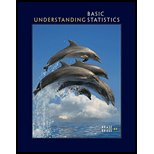Expand Your knowledge: Stratified Sampling and Students in SixthGrade This is a technique to break down the variation of a random variable into useful components (called stratum) in order to decrease experimental variation and increase accuracy of results. It has been found that a more accurate estimate of population mean
μ
can often be obtained by taking measurements from naturally occurring subpopulations and combining the results using weighted averages. For example, suppose an accurate estimate of the mean weight of sixth grade students is desired for a large school system. Suppose (for cost reasons) we can only take a random sample of m = 100 students. Instead of taking a simple random sample of 100 students from the entire population of all sixth grade students, we use stratified sampling as follows. The school system under study consists three large schools. School A has
N
1
=
310
sixth-grade students. School B has
N
2
=
420
sixth-grade students. and School C has
sixth-grade students. This is a total population of 1246 sixth-grade students in our study and we have strata consisting of the 3 schools. A preliminary study in each school with relatively small sample size has given estimates for the sample standard deviation s of sixth-grade student weights in each school. These are shown in the following table:
| School A |
School B |
School C |
|
N
1
=
310
|
N
2
=
420
|
N
3
=
516
|
|
s
1
=
3 lb
|
s
2
=
12 lb
|
s
3
=
6 lb
|
How many students should we randomly choose from each school for a best estimate
μ
for the population mean weight? A lot of mathematics goes into the answer. Fortunately. Bill Williams of Bell Laboratories wrote a book called A Sampler on Sampling (John Wiley and Sons, publisher), which provides an answer. Let
n
1
be the number of students randomly chosen from School A.
n
2
, be the number chosen from School B, and
n
1
be the number chosen from School C. This means our total sample size will be
m
=
n
1
+
n
2
+
n
3
. What is the formula for
n
1
? A popular and widely used technique is the following.
n
1
=
[
N
1
s
1
N
1
s
1
+
N
2
s
2
+
N
3
s
3
]
m
The
n
1
are usually whole numbers, so we need to round to the nearest whole number. This formula allocates more students to schools that have a larger population of sixth graders and/or have larger sample standard deviations Remember, this is a popular and widely used technique for stratified sampling. It is not an absolute rule. There are other methods of stratified sampling also in use. In general practice, according to Bill Williams, the use of naturally occurring strata seems to reduce overall variability in measurements by about 20% compared to simple random samples taken from the entire (unstratified) population.
Now suppose you have taken a random sample size
n
1
from each appropriate school and you got a sample mean weight
x
¯
from each school. How do you get the best estimate for population mean weight
μ
of the all 1246 students? The answer is that we use a weighted average.
μ
=
n
1
m
x
1
¯
+
n
2
m
x
¯
2
+
n
3
m
x
3
¯
COMMENT: This is an example with three strata. Applications with any number of strata can be solved in a similar way with obvious extensions of formulas.
(a) Compute the size of the random samples
n
1
,
n
2
,
n
3
to be taken from each school. Round each sample size to the nearest whole number and make sure they add up to m = 100.
(b) Suppose you took the appropriate random sample from each school and you got the following average student weights:
x
1
¯
=
82
l
b
,
x
2
¯
=
115
l
b
,
x
2
¯
=
90
l
b
. Compute your best estimate for the population mean weight
μ
.


 Big Ideas Math A Bridge To Success Algebra 1: Stu...AlgebraISBN:9781680331141Author:HOUGHTON MIFFLIN HARCOURTPublisher:Houghton Mifflin Harcourt
Big Ideas Math A Bridge To Success Algebra 1: Stu...AlgebraISBN:9781680331141Author:HOUGHTON MIFFLIN HARCOURTPublisher:Houghton Mifflin Harcourt Glencoe Algebra 1, Student Edition, 9780079039897...AlgebraISBN:9780079039897Author:CarterPublisher:McGraw Hill
Glencoe Algebra 1, Student Edition, 9780079039897...AlgebraISBN:9780079039897Author:CarterPublisher:McGraw Hill
